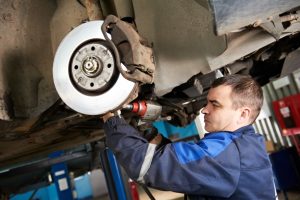Most people associate humidity in their interiors with discomfort and stuffiness. Some moisture in your interiors is, however, essential to protect your belongings and maintain your indoor comfort. Ideally, the humidity levels in your indoors should be 40% to 60%.
In cold months, however, this level drops since cold air will carry less moisture compared to warm air. Most microorganisms will thrive in this low humidity, and your skin, eyes, and mucosal membranes will dry, making you uncomfortable.
Central air conditioning is among the leading choices for Riverton residents looking for comfortable interiors. In cold months, however, furnaces do an exceptional job in keeping your indoors warm in even the coldest times. A furnace humidifier is essential to maintain an adequate moisture level in your indoors.
It works with the furnace to increase the moisture levels your entire home. Here are your furnace humidifier options.
Steam Humidifiers
These will heat water to a boiling point and turn it into steam even when your furnace is not operational. The blower will pick this steam and then push it to your interiors through the vents. Steam humidifiers are very fast and the most efficient for increasing then maintaining the ideal humidity level in your indoors.
They are, however, quite costly compared to other alternatives.
Bypass Humidifiers
These are whole house humidifiers that will draw the air from your furnace’s heat ducts then pass it through water panels. This way, the air will absorb moisture before being returned to your indoors. Bypass humidifiers are either installed into the return or supply plenum of your furnace and will need a floor drain for excess water.
If, however, your home has no floor drain, you can opt for a drainless bypass humidifier. This recirculates its water and minimizes the humidifier’s water wastage and use.
Fan-Powered Humidifier

This works like the bypass humidifier but has a fan that will blow the air across its water panels. Fan-powered humidifiers hence have a higher output compared to bypass ones. They will generate about one gallon more humidity than the latter.
Moreover, these humidifiers need no bypass duct and can be installed in small spaces. They, therefore, suffice for homes that have their air conditioning systems in closets.
Spray Mist Humidifiers
With these humidifiers, a pipe containing water will directly spray mist into your furnace’s supply air. The mixture generated will be distributed through your interiors with the air flow. Spray mist humidifiers are inexpensive, need no form of bypass ducting, and use minimal energy.
The spray nozzle of these humidifiers might at times clog more so when filled with hard water necessitating costly repairs. You should thus invest in a water softening appliance if you have hard water to minimize this risk.
When picking your furnace’s humidifier from the above alternatives, consider its controls. Opt for those with easy-to-read in-built humidistats. These will measure your indoor moisture levels and switch the humidifier on an off as needed.
Installing a furnace without a humidifier will not guarantee you the indoor comfort you are looking for. You should, however, get an expert’s input on which humidifier type works best with the furnace you have.














